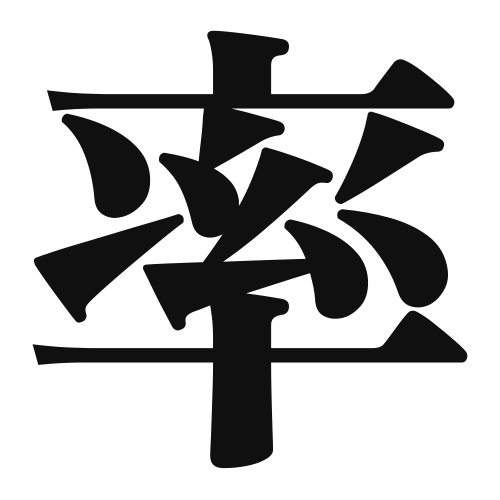1. Overview of Meaning
The kanji “率” (pronounced “ritsu” or “sū”) primarily means “rate,” “ratio,” or “lead.” It is often used to express a proportion or a guiding principle in various contexts.
2. Origin and Radicals
The kanji “率” is a phonetic compound (形声文字), which means it combines a semantic component with a phonetic component. The left part, “彳,” relates to movement or walking, while the right part, “率,” indicates the sound. The radical for “率” is “彳,” which is associated with movement.
3. Examples of Usage
Common words and phrases that include “率” are:
- 割合 (wariai) – ratio
- 率先 (sessen) – taking the lead
- 出率 (shutsuryō) – output rate
Example sentences in daily conversation:
- この商品の売上率は高いです。 (Kono shōhin no uriage ritsu wa takai desu.) – The sales rate of this product is high.
- 彼は率先して行動しました。 (Kare wa sessen shite kōdō shimashita.) – He took the initiative to act.
4. Synonyms and Antonyms
Similar kanji with related meanings include:
- 比率 (hiritsu) – ratio, which emphasizes comparison between two quantities.
- 率 (ritsu) – focuses more on the concept of leading or guiding.
Antonyms include:
- 減少 (genshō) – decrease, which indicates a reduction in quantity or rate.
5. Cultural and Historical Background
The kanji “率” has significant ties to Japanese culture, particularly in contexts involving leadership and guidance. It is often used in proverbs and idiomatic expressions, such as:
- 率先垂範 (sessen suihan) – to take the lead and set an example for others.
This reflects the cultural value placed on leadership and initiative in Japanese society.
